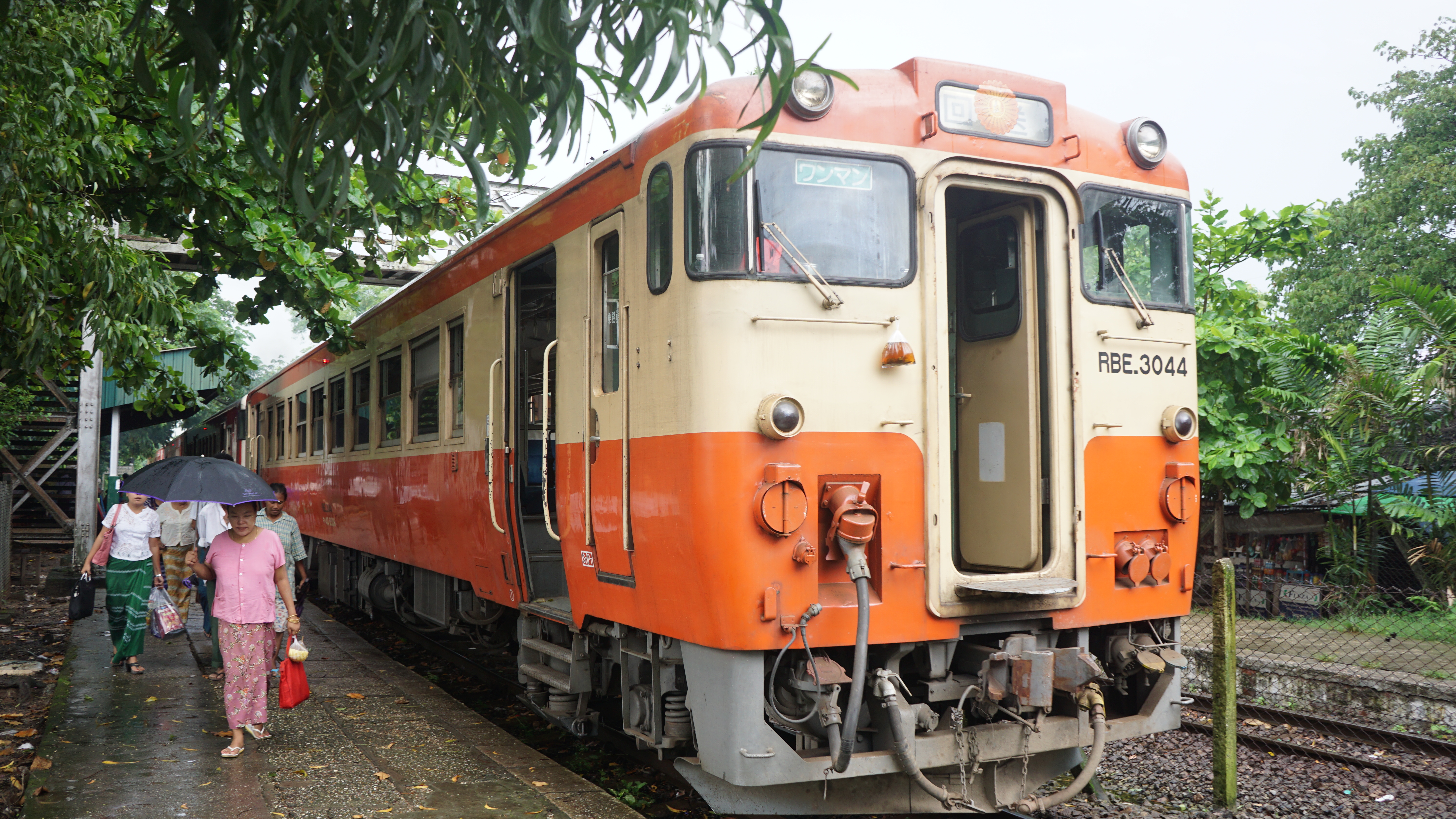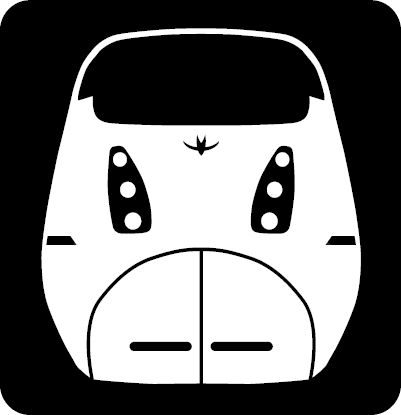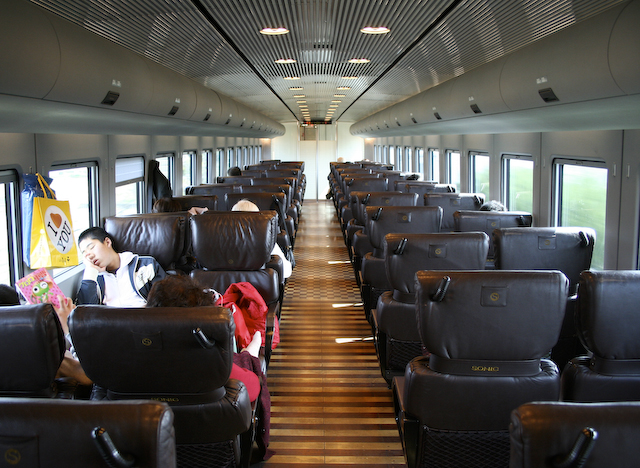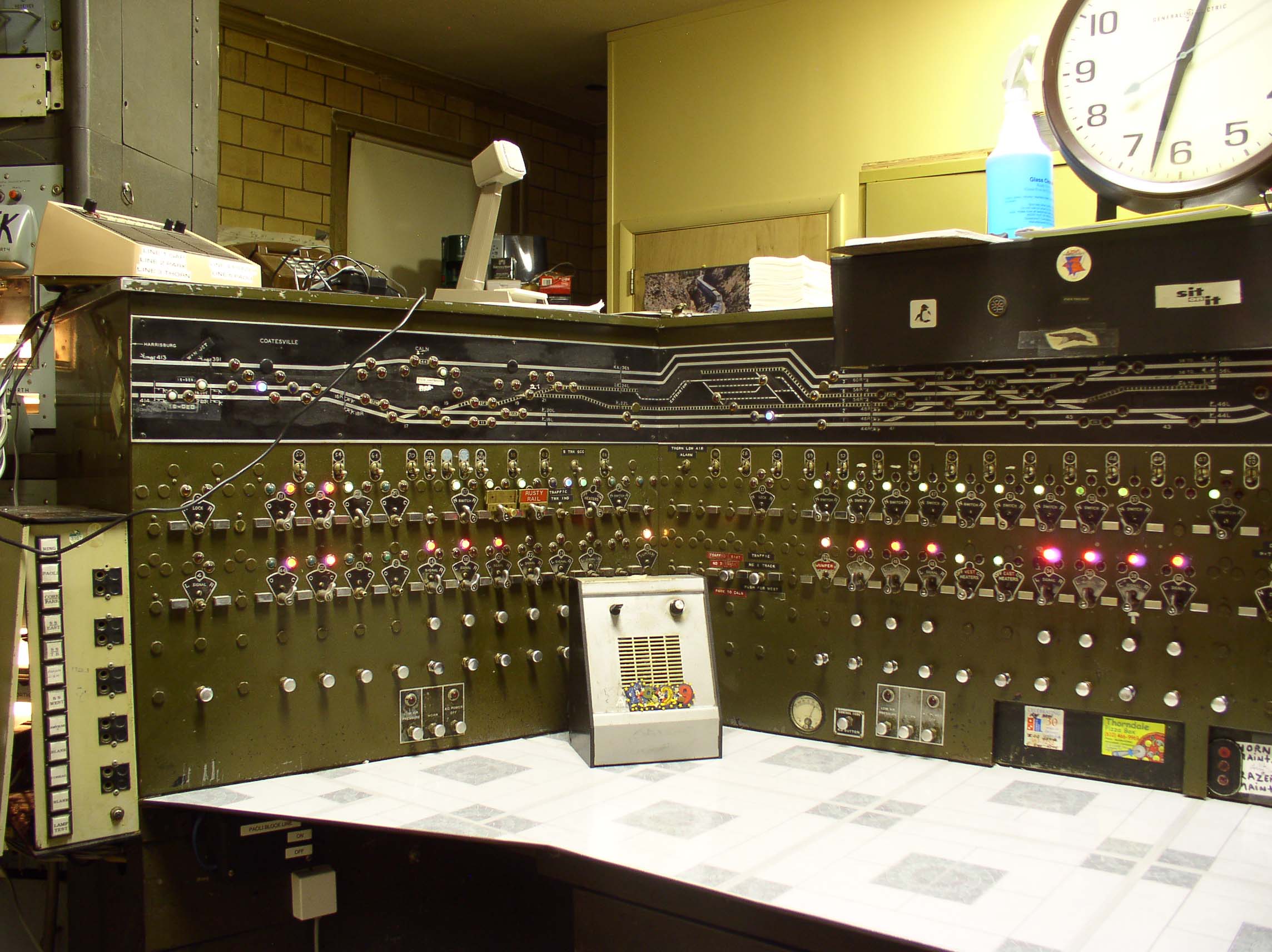|
Nagasaki Main Line
The , or simply Nagasaki Line, is a railway line owned by the Kyushu Railway Company (JR Kyushu) connecting Tosu Station in Saga Prefecture to Nagasaki Station in Nagasaki Prefecture, Japan. There is a separate branch of this line from Kikitsu Station to Urakami Station by way of Nagayo Station and the Nagasaki Tunnel, avoiding a long detour. Route data *Operators and route length: **JR Kyushu (services and tracks) ***Tosu - Nagasaki: ***Kikitsu - Nagayo - Urakami: ** JR Freight (services) ***Tosu - Nagasaki: *Stations: 41 (including seasonal stations) *Double-tracking: **Tosu - Kōhoku **Isahaya - Kikitsu **Urakami - Nagasaki *Electrification: Tosu - Hizen-Hama (20kV AC 60 Hz) *Railway signalling: Automatic * CTC center: Hakata Integrated Operations Center Route description The line is single-tracked between Kōhoku and Isahaya stations due to the coastal geography of the area making double-tracking prohibitively expensive. The "old route" (旧線) is the branch of the ... [...More Info...] [...Related Items...] OR: [Wikipedia] [Google] [Baidu] |
KiHa 40 Series
The is a diesel multiple unit (DMU) train type introduced by Japanese National Railways (JNR) in 1977 and operated by all Japan Railways Group companies on suburban and rural services in Japan. Since 2017, the train type has seen use by other private railway companies in Japan, following the removal of services by Japan Railways groups. Additionally, it has also seen use in overseas operations in Myanmar since 2011. Overview The KiHa 40 series diesel multiple unit was introduced in 1977 by JNR to replace ageing KiHa 10 series DMUs on suburban and rural services nationwide. A total of 888 vehicles were built between 1977 and 1982, broadly divided into three main types: KiHa 40, KiHa 47, and KiHa 48. These were subdivided as shown below, with further variants and modifications made later in their lives by the various JR Group companies. "Cold" regions refers to the Tohoku and Chubu regions. JR Hokkaido Following the privatization and splitting of JNR in April 1987, JR Hokk ... [...More Info...] [...Related Items...] OR: [Wikipedia] [Google] [Baidu] |
Nagasaki Electric Tramway
The is a private tram system in Nagasaki, Japan. Since March 20, 2008, its lines accept Nagasaki Smart Card, a smart card ticketing system. The company was founded on August 2, 1914, while the tram line was opened on November 16, 1915. It once operated bus lines as well, but went out from the division later in 1971. The company and the lines are commonly known as . Locals also call them , while JR lines are called ''JR'', , or . The lines are stably making profits and they are the only tramway operator in Japan that has not lost any of its original lines. The current fare is ¥140 for adults and ¥70 for school aged children. Line and routes Only interchangeable stations are shown here. *Lines: Officially, there are five lines totaling 11.5 km. ** Akasako Branch Line (赤迫支線): Akasako — Sumiyoshi ** Main Line (本線): Sumiyoshi — Nagasaki-Ekimae — (Dejima) — Tsukimachi — Nishihamanomachi — Shōkakuji-shita ** Sakuramachi Branc ... [...More Info...] [...Related Items...] OR: [Wikipedia] [Google] [Baidu] |
Huis Ten Bosch (train)
The is a limited express train service operated by Kyushu Railway Company (JR Kyushu) in Japan. It runs between Hakata Station in Fukuoka, Fukuoka, and Huis Ten Bosch Station, the station for the Huis Ten Bosch Huis ten Bosch ( nl, Paleis Huis ten Bosch, ; English: "House in the Woods") is a royal palace in The Hague, Netherlands. It is one of three official residences of the Dutch monarch; the two others being the Noordeinde Palace in The Hague a ... theme park in Sasebo, Nagasaki. History ''Huis Ten Bosch'' services started on 25 March 1992. References {{DEFAULTSORT:Huis Ten Bosch (Train) Named passenger trains of Japan Railway services introduced in 1992 Kyushu Railway Company ... [...More Info...] [...Related Items...] OR: [Wikipedia] [Google] [Baidu] |
Midori (train)
The is a limited express train service which runs between and in Kyushu, Japan, operated by the Kyushu Railway Company (JR Kyushu). Service pattern ''Midori'' services run between and , often combined with ''Huis Ten Bosch'' services between Hakata and . In the past, services were also combined with some '' Kamome'' services between Hakata and (now renamed to Kōhoku Station). Rolling stock Services are formed of 4-car 783 series electric multiple unit (EMU) sets with Green car (first class) accommodation. As of 2022, 787 series and 885 series trains are also used for Midori services to Hakata. Formations Services are normally formed of 4- or 8-car 783 series EMU formations as shown below. All cars are no-smoking. 4-car formations 8-car formations History The ''Midori'' name was first used from 1 October 1961 on limited express services operating between Osaka and Hakata using 12-car KiHa 80 series diesel multiple unit (DMU) sets. Timings were as shown below. * Do ... [...More Info...] [...Related Items...] OR: [Wikipedia] [Google] [Baidu] |
Nishi Kyushu Shinkansen
The is a Japanese Shinkansen high-speed rail line on the northwest part of Kyushu Island that is operated by the Kyushu Railway Company (JR Kyushu). A segment of the line that connects Nagasaki to commenced service on 23 September 2022. The line runs parallel to the existing Nagasaki Main Line and has a total length of , making it the shortest high-speed Shinkansen railway line in Japan in terms of length. The entire line is envisioned to connect to , and potentially become an extension of the San'yō Shinkansen in Honshu. However, as of 2022 the route of the segment east of Takeo-Onsen to Hakata via Saga has yet to be decided, and construction has yet to commence. It remains unclear when the entire line will be completed. For the foreseeable future, the Relay Kamome service provides a connection to Hakata. Services Services are operated by 6-car N700S series trains, at a maximum speed of . Initially, there is only one service type, named ''Kamome''. All ''Kamome'' servic ... [...More Info...] [...Related Items...] OR: [Wikipedia] [Google] [Baidu] |
Takeo-Onsen Station
is a railway station operated by Kyushu Railway Company (JR Kyushu) in Takeo, Saga, Japan. It is operated by JR Kyushu and is served by the Nishi Kyushu Shinkansen and the Sasebo Line. Lines The station is served by the Sasebo Line and is located 13.7 km from the starting point of the line at . Besides the local services on the Sasebo Line, the JR Kyushu Limited Express services ''Midori'' (from to ) and ''Huis Ten Bosch'' (from to ) also stop at this station. The Nishi Kyushu Shinkansen to and from also terminates here. Services to and from are additionally provided with the Limited Express '' Relay Kamome'' service, with a cross-platform transfer for Nishi Kyushu Shinkansen passengers. Station layout The station building consists of two side platforms serving two elevated tracks. The station complex has entrances north and south of the tracks and is a modern structure completed in 2009. The Nishi Kyushu Shinkansen has an island platform and a side platform servin ... [...More Info...] [...Related Items...] OR: [Wikipedia] [Google] [Baidu] |
Kamome
is a limited express train operated by JR Kyushu in Japan. It operates between Hakata and Nagasaki on the Kagoshima Main Line and the Nagasaki Main Line. ''Kamome'' means seagull in Japanese. As of 23 September 2022, the name was inherited by the new Shinkansen service to Nagasaki, at which point the remaining limited express services between Takeo-Onsen and Hakata were renamed ''Relay Kamome''. History The ''Kamome'' name (written as "鷗") was first used from 1 July 1937 on limited express trains operating between Tokyo and Kobe. This service continued until February 1943. The name (written as "かもめ") was subsequently revived from 15 March 1953 for use on limited express services operating between Kyoto and Hakata. This service was discontinued in March 1975 with the completion of the Sanyō Shinkansen to Hakata. On 1 July 1976, with the electrification of the Nagasaki Main Line, services resumed (initially between Kokura and Nagasaki, later between Hakata and Nagas ... [...More Info...] [...Related Items...] OR: [Wikipedia] [Google] [Baidu] |
Centralized Traffic Control
Centralized traffic control (CTC) is a form of railway signalling that originated in North America. CTC consolidates train routing decisions that were previously carried out by local signal operators or the train crews themselves. The system consists of a centralized train dispatcher's office that controls railroad interlockings and traffic flows in portions of the rail system designated as CTC territory. One hallmark of CTC is a control panel with a graphical depiction of the railroad. On this panel, the dispatcher can keep track of trains' locations across the territory that the dispatcher controls. Larger railroads may have multiple dispatcher's offices and even multiple dispatchers for each operating division. These offices are usually located near the busiest yards or stations, and their operational qualities can be compared to air traffic towers. Background Key to the concept of CTC is the notion of ''traffic control'' as it applies to railroads. Trains moving in opposite ... [...More Info...] [...Related Items...] OR: [Wikipedia] [Google] [Baidu] |
Railway Signalling
Railway signalling (), also called railroad signaling (), is a system used to control the movement of railway traffic. Trains move on fixed rails, making them uniquely susceptible to collision. This susceptibility is exacerbated by the enormous weight and inertia of a train, which makes it difficult to quickly stop when encountering an obstacle. In the UK, the Regulation of Railways Act 1889 introduced a series of requirements on matters such as the implementation of interlocked block signalling and other safety measures as a direct result of the Armagh rail disaster in that year. Most forms of train control involve movement authority being passed from those responsible for each section of a rail network (e.g. a signalman or stationmaster) to the train crew. The set of rules and the physical equipment used to accomplish this determine what is known as the ''method of working'' (UK), ''method of operation'' (US) or ''safeworking'' (Aus.). Not all these methods require the u ... [...More Info...] [...Related Items...] OR: [Wikipedia] [Google] [Baidu] |
Nagayo Station
is a railway station in Nagayo, Nagasaki Prefecture, Japan. It is operated by JR Kyushu and is on the Nagasaki Main Line. Lines The station is served by the old line or the Nagayo branch of the Nagasaki Main Line and is located 15.4 km from the branch point at . Only local trains run on this branch. Station layout The station consists of two side platforms serving two tracks with a siding branching off track 1. The station building isa hashigami structure where the station facilities such as a waiting area, ticket window and ticket gates are placed on a bridge which spans the tracks. After the ticket gates, flights of steps connect to the platforms. Management of the station has been outsourced to the JR Kyushu Tetsudou Eigyou Co., a wholly owned subsidiary of JR Kyushu specialising in station services. It staffs the ticket window which is equipped with a ''Midori no Madoguchi'' facility. Adjacent stations History The private Kyushu Railway, had opened a track fro ... [...More Info...] [...Related Items...] OR: [Wikipedia] [Google] [Baidu] |
Urakami Station
is a railway station in Kawaguchi-chō, Nagasaki, Nagasaki Prefecture, Japan. It is operated by JR Kyushu and is on the Nagasaki Main Line. It is the station where the old line and new line sections of the Nagasaki Line intersect. In front of the station is the Urakami Ekimae stop on the Nagasaki Electric Tramway. Layout Urakami Station has a single elevated island platform servicing two tracks. The station entrance and ticketing area are located on the ground level with the platforms on the upper level. There are two automatic ticket machines, a ''Midori no Madoguchi'' ticket office and two SUGOCA card readers instead of automatic ticket gates. Surrounding area In front of the station is the Urakami Ekimae stop of the Nagasaki Electric Tramway. Behind the station is a hospital, and nearby are condos, concert halls, broadcast stations and schools among other things. Many of the people who use this station are commuters to these places. Educational facilities *Kassui ... [...More Info...] [...Related Items...] OR: [Wikipedia] [Google] [Baidu] |
Kikitsu Station
is a railway station in Tarami-chō, Isahaya, Nagasaki Prefecture, Japan. It is operated by JR Kyushu and is on the Nagasaki Main Line. From here, in the direction of Nagasaki, line splits into the "new line" (inland route via ) and the "old line" (coastal route via ). Lines The station is served by the Nagasaki Main Line and is located 106.9 km from the starting point of the line at . Besides the local services on the line, the JR Kyushu Rapid ''Seaside Liner'' service between and also stops at the station. Station layout The station consists of a side and an island platform serving three tracks. The station building, a timber structure, houses a waiting area and a ticket window. Access to the opposite side platform is by a footbridge served by elevators. Management of the station has been outsourced to the JR Kyushu Tetsudou Eigyou Co., a wholly owned subsidiary of JR Kyushu specialising in station services. It staffs the ticket window which is equipped with a ''Mid ... [...More Info...] [...Related Items...] OR: [Wikipedia] [Google] [Baidu] |







